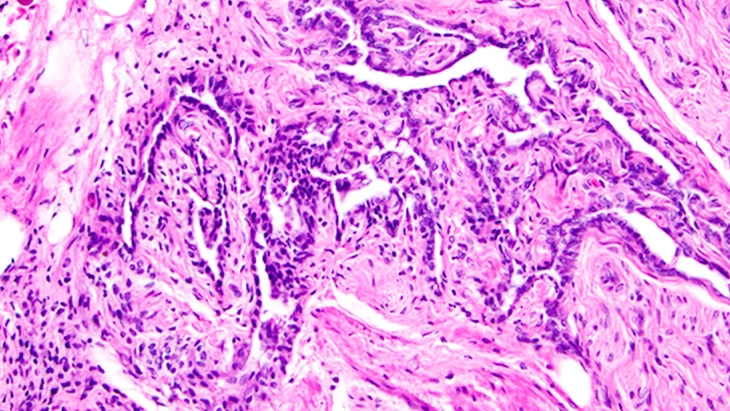
The ovarian network has long been considered useless in women, but new research finds it plays an important role in reproduction - Illustration photo AI
Although discovered in humans since 1870, the ovarian network was once considered an "evolutionary relic" in women, meaning it had a function in the embryonic stage but no longer has a role in the adult body.
However, research by a group of scientists at the University of Michigan (USA), published in the journal eLife , has changed this long-standing view.
They demonstrated that the ovarian reticulum not only exists in a purely functional manner, but may also play an active role in maintaining ovarian function, regulating hormones, and even supporting fertility.
Using mass spectrometry, scientists detected thousands of proteins present in the ovarian reticular layers, including IGFBP2, a protein that may be related to ovarian function and follicle development.
A series of other experiments also showed that fluid within the ovarian reticulum migrates toward the ovary, suggesting that it is not just a passive structure, but may also be involved in maintaining the ovarian environment.

The ovarian reticulum (Rete ovarii) is a horseshoe-shaped network of small tubes located below the ovary, at the site where blood vessels and nerves enter this organ - Photo: Apperson, KD
Notably, the cells of the ovarian reticulum also express genes encoding receptors for the hormones estrogen and progesterone: two important hormones in the menstrual cycle and female reproductive health.
Professor Adam Taylor (Lancaster University, UK) commented: "The ovarian network seems to have a role in maintaining the stability of the ovary, sensing the movement of surrounding fluids, and especially endocrine function, something that scientists had never thought of before."
Although the new research was conducted on mice, because this structure also exists in many other mammals such as cows, dogs, cats, monkeys... and humans also have a similar mechanism for developing genitals in the early stages of mice, scientists believe that these findings are very likely to be applicable to humans.
"The anatomy of the female reproductive system still holds many mysteries that modern medicine has yet to fully explore . I hope this discovery will open a new door, helping scientists continue their journey to decode the sophisticated mechanisms that have been forgotten for centuries," said Dr. Dilara Anbarci, the study's lead author.
Elucidating the role of the ovarian reticulum not only questions old views in anatomy, but may also open up new directions in the treatment of diseases related to the female reproductive system, especially endocrine disorders, infertility, and disorders related to ovarian function.
This discovery is also considered a foundation stone for advances in modern reproductive medicine, from better understanding the biological mechanisms of the ovaries, to developing more precise and effective reproductive support methods in the future.
Source: https://tuoitre.vn/phat-hien-bat-ngo-ve-bo-phan-bi-coi-la-vo-dung-cua-phu-nu-20250418120406839.htm



![[Photo] National Assembly Chairman Tran Thanh Man attends the VinFuture 2025 Award Ceremony](/_next/image?url=https%3A%2F%2Fvphoto.vietnam.vn%2Fthumb%2F1200x675%2Fvietnam%2Fresource%2FIMAGE%2F2025%2F12%2F05%2F1764951162416_2628509768338816493-6995-jpg.webp&w=3840&q=75)


![[Photo] 60th Anniversary of the Founding of the Vietnam Association of Photographic Artists](/_next/image?url=https%3A%2F%2Fvphoto.vietnam.vn%2Fthumb%2F1200x675%2Fvietnam%2Fresource%2FIMAGE%2F2025%2F12%2F05%2F1764935864512_a1-bnd-0841-9740-jpg.webp&w=3840&q=75)






























































































Comment (0)